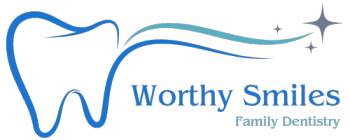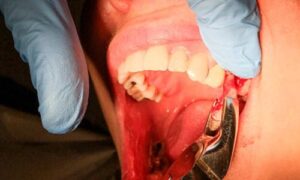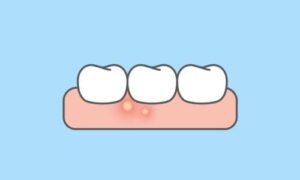This article explores tooth extractions in orthodontics, exploring their significance, controversies, and impact on overall dental health. Orthodontics, the branch of dentistry focused on the alignment of teeth and jaws, is crucial in enhancing the oral cavity’s aesthetic appeal and functionality. Among the myriad of tools and techniques orthodontists employ, tooth extractions stand out as a controversial yet essential aspect of treatment.
Understanding Orthodontics: Beyond Aesthetics
Orthodontics is often associated with achieving a straighter, more aesthetically pleasing smile. While the cosmetic aspect is undeniably important, the field goes beyond mere appearance. Properly aligned teeth improve oral health, reducing the risk of dental issues such as cavities, gum disease, and temporomandibular joint disorders (TMJ).
The primary goal of orthodontic treatment, including tooth extraction in orthodontics, is to achieve occlusal harmony, ensuring that the upper and lower teeth come together correctly during biting and chewing. This harmony is crucial for efficient chewing and speech and preventing abnormal tooth wear. In some cases, achieving such harmony may require the removal of one or more teeth—a decision that sparks debates within the dental community.
The Controversy Surrounding Tooth Extractions in Orthodontics
TExtractingteeth for orthodontic purposes has been met with skepticism and concern. Critics argue that extracting teeth is an extreme measure, potentially causing long-term harm to oral health. However, proponents assert that judicious tooth extractions can be a strategic and beneficial component of orthodontic treatment.
Indications for Tooth Extractions in Orthodontics
Tooth extractions in Orthodontics are typically recommended in specific scenarios, guided by careful assessment and diagnosis. Common indications include:
- Crowding: When there is insufficient space in the dental arch for all the teeth to align properly, extracting one or more teeth may be necessary to create the needed space.
- Protrusion: In cases where the front teeth protrude significantly, extracting one or more teeth can help retract them and achieve a more balanced profile.
- Overjet: An excessive horizontal overlap of the upper front teeth over the lower front teeth, known as overjet, may require tooth extractions to facilitate correction.
- Bite Issues: Malocclusions, such as deep and open bites, may be addressed through tooth extractions to facilitate proper upper and lower teeth alignment.
- Impacted Teeth: Wisdom teeth or other teeth that fail to erupt properly may need to be extracted to prevent complications and facilitate orthodontic treatment.
The Tooth Extraction in Orthodontics Process
Understanding tooth extraction in Orthodontics is crucial for demystifying the procedure and alleviating concerns. The process typically involves the following steps:
- 1. Comprehensive Evaluation: Orthodontists thoroughly evaluate the patient’s dental and facial structure before recommending tooth extractions. This includes assessing the degree of malocclusion, crowding, and other factors that may necessitate extractions.
- Treatment Planning: Based on the evaluation, orthodontists develop a comprehensive treatment plan that may include extracting specific teeth. The plan considers the overall goals of treatment, the desired outcome, and the impact on aesthetics and function.
- Preparatory Measures: Before the extraction, orthodontists may employ preparatory measures such as creating space for tooth movement, addressing any underlying gum or periodontal issues, and ensuring the patient’s overall oral health.
- Extraction Procedure: The extraction procedure itself is performed with precision and care. Local anesthesia is typically administered to ensure the patient’s comfort. The orthodontist then removes the designated tooth or teeth, minimizing trauma to surrounding tissues.
- 5. Post-Extraction Care: Following the extraction, patients receive post-operative instructions to promote optimal healing. This may include recommendations for oral hygiene, dietary restrictions, and pain management techniques.
Advances in Orthodontics: Minimizing the Need for Extractions
In recent years, advancements in orthodontic techniques and technology have aimed to minimize the need for tooth extractions. These innovations include:
- Temporary Anchorage Devices (TADs): Temporary anchorage devices, such as mini-implants, provide additional anchorage points for orthodontic appliances. This innovation allows orthodontists to achieve tooth movement without relying solely on natural teeth, reducing the need for extractions.
- Invisalign and Clear Aligners: Clear aligner systems, like Invisalign, have gained popularity for their ability to straighten teeth without using traditional braces. Clear aligners can sometimes address alignment issues without needing extractions, providing a more aesthetically pleasing alternative.
- Palatal Expanders: Palatal expanders can create additional space in the dental arch, addressing crowding without needing extractions. This non-surgical approach is particularly beneficial in younger patients with developing dental arches.
The Future Tooth Extractions in Orthodontics
As the field of orthodontics continues to evolve, the focus is increasingly shifting toward personalized treatment plans. Each patient’s unique dental and facial characteristics are considered to be tailored orthodontic interventions that optimize aesthetics and function.
Precision Medicine in Orthodontics
Advancements in genetics and precision medicine are contributing to a more individualized approach to orthodontic care. Genetic testing may provide insights into a patient’s predisposition to certain dental conditions, guiding orthodontists in developing personalized treatment plans that minimize the need for extractions. Precision medicine allows orthodontists to predict treatment outcomes more accurately, reducing the likelihood of unexpected complications.
Collaborative Care and Patient Education
In the evolving landscape of orthodontics, collaborative care and patient education play crucial roles. Orthodontists work closely with other dental specialists, such as oral surgeons and periodontists, to ensure a comprehensive approach to treatment. This collaborative effort helps address complex cases with minimal reliance on extractions when possible.
Patient education is equally vital. Informed patients are better equipped to participate actively in their treatment decisions. Orthodontists strive to communicate the rationale behind treatment plans, including the potential need for extractions, and address any concerns or misconceptions the patient may have.
Potential Complications and Risks
While orthodontic tooth extractions are generally considered safe and routine, it’s important to acknowledge potential complications and risks associated with the procedure.
- Infection: Infection is a rare but possible complication following a tooth extraction. Orthodontists take preventive measures, such as prescribing antibiotics and providing post-operative care instructions, to minimize the risk of infection.
- Changes in Facial Aesthetics: Careful treatment planning aims to mitigate changes in facial aesthetics resulting from extractions. However, in some cases, particularly when multiple extractions are performed, there may be subtle changes in the patient’s facial profile.
- Temporomandibular Joint (TMJ) Issues: Critics often express concerns about the potential impact of extractions on the temporomandibular joint. While there is ongoing research in this area, current evidence suggests that well-planned orthodontic treatment, including extractions, does not necessarily lead to TMJ problems.
Patient-Centric Approach to Orthodontics
As the field of orthodontics evolves, the emphasis on a patient-centric approach becomes increasingly pronounced. Patient satisfaction goes beyond achieving a beautiful smile; it encompasses the overall experience, from initial consultations to the completion of treatment.
Informed Decision-Making
Orthodontists empower patients to make informed decisions about their treatment. This involves explaining different approaches, benefits, and potential drawbacks, including the possibility of tooth extractions. Informed consent ensures that patients actively participate in their orthodontic journey.
Embracing Diversity in Treatment Options
Recognizing that every patient is unique, orthodontists embrace diverse treatment options. Some cases may require extractions for optimal results, while others may benefit from alternative approaches. Tailoring treatment plans to individual needs ensures that orthodontic interventions align with both aesthetic goals and functional requirements.
Conclusion: Tooth Extractions in Orthodontics
The role of tooth extractions in orthodontics is a multifaceted and nuanced aspect of treatment. While controversies persist, the evolving landscape of orthodontics, marked by technological advancements and personalized care, is reshaping the narrative.
Tooth extractions in Orthodontics, when performed judiciously and as part of a comprehensive treatment plan, can contribute to achieving optimal oral health and function. Technology advancements, such as TADs and clear aligners, provide alternatives to traditional extractions, offering patients more choices and reducing the impact on facial aesthetics.
As the field progresses, collaborative care, patient education, and a commitment to precision medicine will further enhance the effectiveness of orthodontic interventions. The future of orthodontics lies in balancing the pursuit of a beautiful smile with preserving optimal oral health, recognizing that each patient’s journey is unique.
In navigating the landscape of orthodontic tooth extractions, a harmonious blend of art and science emerges—one that prioritizes individualized care, embraces innovation, and ultimately enhances the lives of patients seeking a radiant smile and lasting oral health and well-being.
FAQs related to tooth extractions in orthodontics
FAQ1: Why might tooth extractions be necessary in orthodontics?
Answer: In orthodontics, tooth extractions may be necessary to address issues such as overcrowding, protrusion, or bite misalignments. Extracting specific teeth creates space, allowing for proper alignment and improved occlusal harmony. Your orthodontist will carefully assess your dental condition to determine if extractions are beneficial for optimal treatment outcomes.
FAQ2:Do tooth extractions in orthodontics impact facial aesthetics?
AnswerCarefully planned orthodontic tooth extractions aim to minimize any impact on facial aesthetics. While there may be subtle changes, particularly in multiple extractions, modern orthodontic techniques prioritize achieving a harmonious balance between aesthetics and facial structure. Thorough communication with your orthodontist can help address concerns and ensure a comprehensive understanding of the potential effects.
FAQ3: Are there alternatives to tooth extractions in orthodontics?
Answer: Advancements in orthodontic technology have introduced alternatives to traditional tooth extractions. Techniques such as Temporary Anchorage Devices (TADs), clear aligners like Invisalign, and palatal expanders offer non-extraction options in certain cases. Your orthodontist will assess your needs and discuss the most suitable treatment plan, considering aesthetics and overall dental health.
Read More:
Correcting Abnormal Eruptions with Braces: Before and After Transformations














